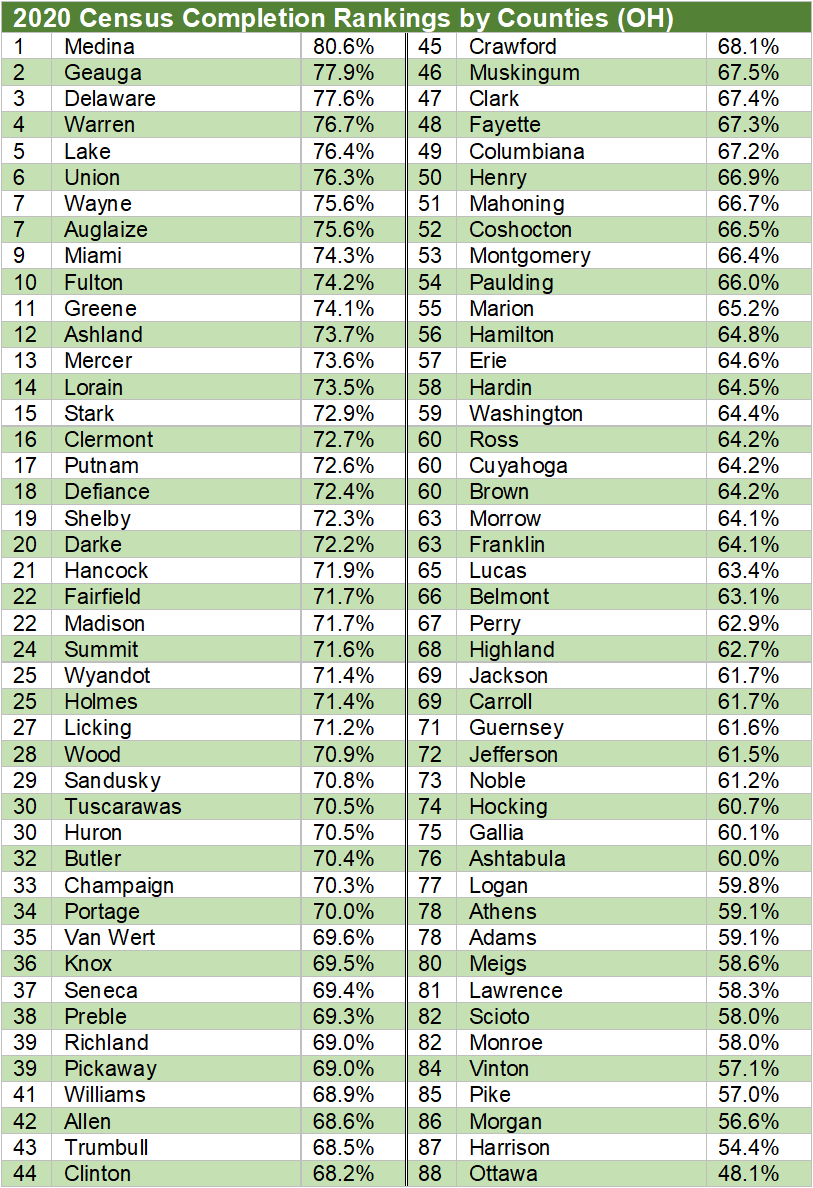Back in March, we wrote about how the 2020 Census would be one of the most critical decennial counts in a generation, not just because of the apportionment of congressional representation, but also in determining how to allocate billions of dollars in federal funding that flows into states and communities each year.
The COVID-19 pandemic created a series of challenges this year as communities have scrambled to get a complete Census count. While forms were mailed-out in mid-March this year, following-up with door-to-door census-takers has been difficult due to the need to socially-distance to prevent the spread of the coronavirus. While door-to-door efforts are now underway, those efforts were focused on completing the count by October 31, 2020 (a delay implemented in April by the United States Census Bureau).
However, on August 3, the White House announced that the new deadline to complete the Census was being moved-up by one month, to September 30. Even more problematic, rather than delay the delivery of the results of the Census by six months as had originally been planned (to April 30, 2021) in order to give the Census Bureau time to validate and analyze data accuracy before it is delivered to the president, the new mandate is that the data be delivered on time, as originally planned, on December 31, 2020.
This is problematic for a number of critical reasons. First, response to the 2020 Census is at a historic low nationally, at just 63.5 percent. While Ohio is above the national average at 67.7 percent self-response completion, that is below the response rate of other states Ohio is “competing” with to avoid losing congressional representation, including Michigan (69% - No. 5) and Illinois (68.5% - No. 7).
Data courtesy of the U.S. Census Bureau. Current through August 12, 2020
Pushing forward to completion deadline for the census will lead to a massive undercount of rural, minority, and immigrant populations in Ohio, communities have been disproportionately affected by the coronavirus pandemic.
In Ohio, completion rates among Ohio’s 88 counties very from a high of 80.6% in Medina County, near Cleveland, to a low of 48.1% in Ottawa County in Northwest Ohio.
Data courtesy of the U.S. Census Bureau. Current through August 12, 2020
Finally, among Ohio’s major cities, the completions range from a high in Akron of 61.9% to a low of 47.9% in Cleveland:
Data courtesy of the U.S. Census Bureau. Current through August 12, 2020
It is critically important for all Ohio communities to complete the census. Undercounting statewide will result in Ohio being unfairly deprived of critical funding for roads, schools, health care, water quality, childcare, agriculture support, job training and more than 300 other federal programs.
Additionally, Ohio is on the bubble, based on current projections, to lose representation in Congress. This will be ensured if the state does not get a full and complete count in the 2020 Census.
Source: Brennan Center for Justice. Image by Greater Ohio.
It’s not too late to shape your community’s future. Respond at 2020census.gov. If you do not respond online, by phone, or by mail, a census taker will need to visit your home to collect your response.
All census takers undergo virtual COVID-19 training on social distancing and other health and safety protocols before beginning their work in neighborhoods. The Census Bureau has provided face masks to every census taker and mandated that all census takers wear one. In addition, census takers carry an ID badge with their photograph, a U.S. Department of Commerce watermark, and an expiration date.
For more information on the Census Bureau’s process for visiting households that haven’t responded, visit Census Takers in Your Neighborhood.





